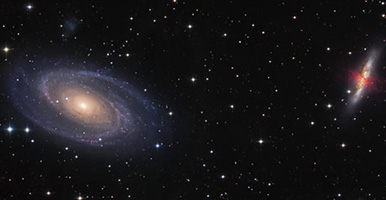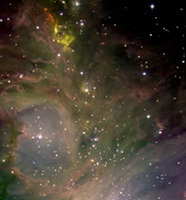Computational and theoretical galaxy formation
Using state-of-the-art simulations
We work on many aspects of galaxy formulations and evolution.
We use state-of-the-art N-body and cosmological hydrodynamical simulations on our own High Performance Computing (HPC) cluster as well as on national and international supercomputing facilities, such as Distributed Research utilising Advanced Computing (DiRAC) and Partnership for Advanced Computing in Europe (PRACE). Three of our members are associates of the Virgo Consortium for cosmological supercomputer simulations. Our collaborative work on the Virgo Consortium's EAGLE Project has resulted in the second highest cited paper in astrophysics and we were awarded Research Project of the Year at the Educate North Awards 2016.
Our simulations are used extensively by a number of observational collaborations and we work closely with observers to interpret a wide variety of observational data and test the realism of our models.
We have constructed our own cluster for analysing large volume simulations carried out on national HPC facilities and for running and analysing 'zoomed' simulations of disc galaxies, run primarily with the massively parallel cosmological simulation code Gadget-3.
We have high-capacity storage servers storing the outputs (snapshots) and processed data products (movies, maps, catalogs, etc.) of our simulations, which can contain several billion resolution elements (particles) each.
People
Meet the members of this research group:




